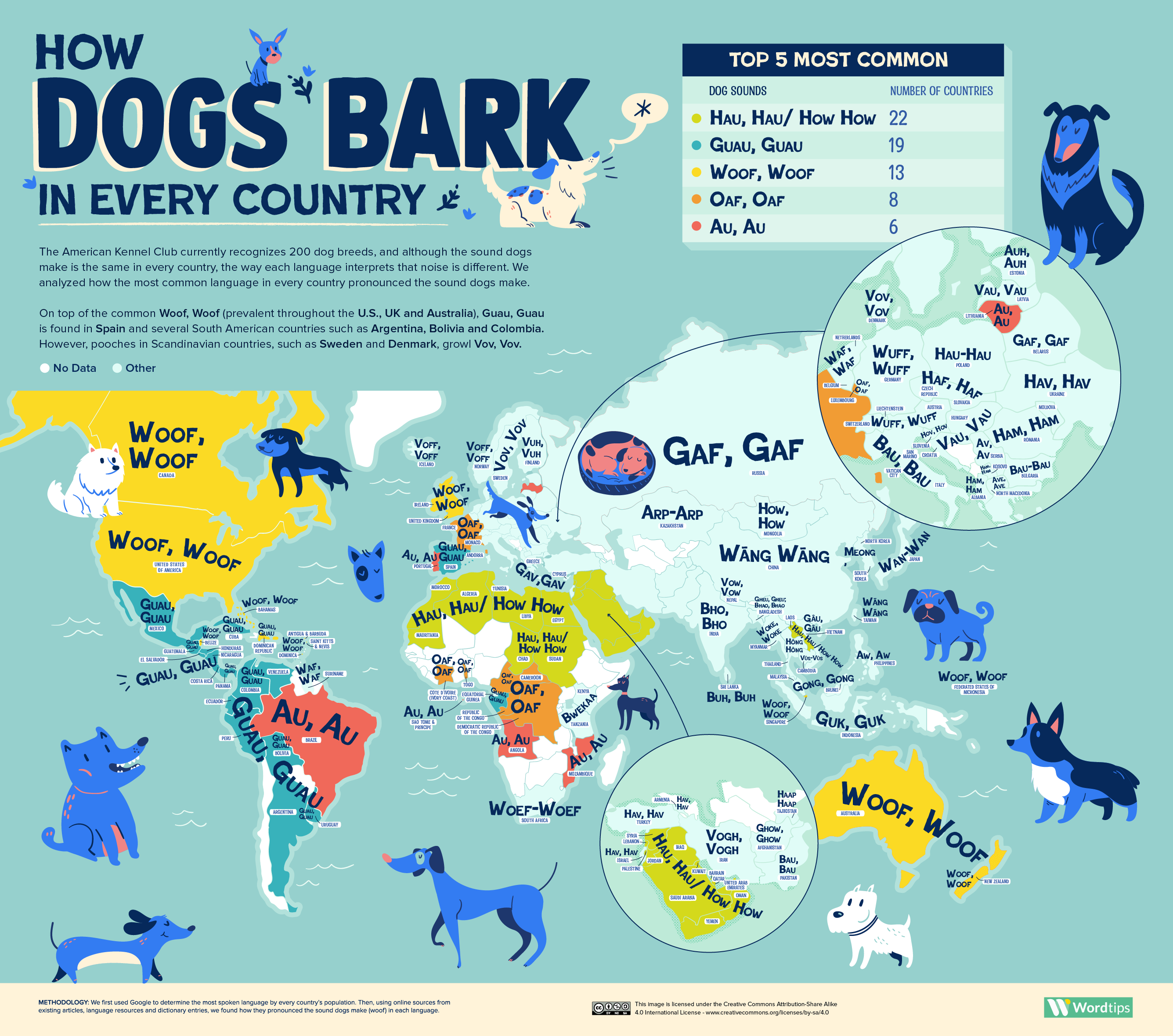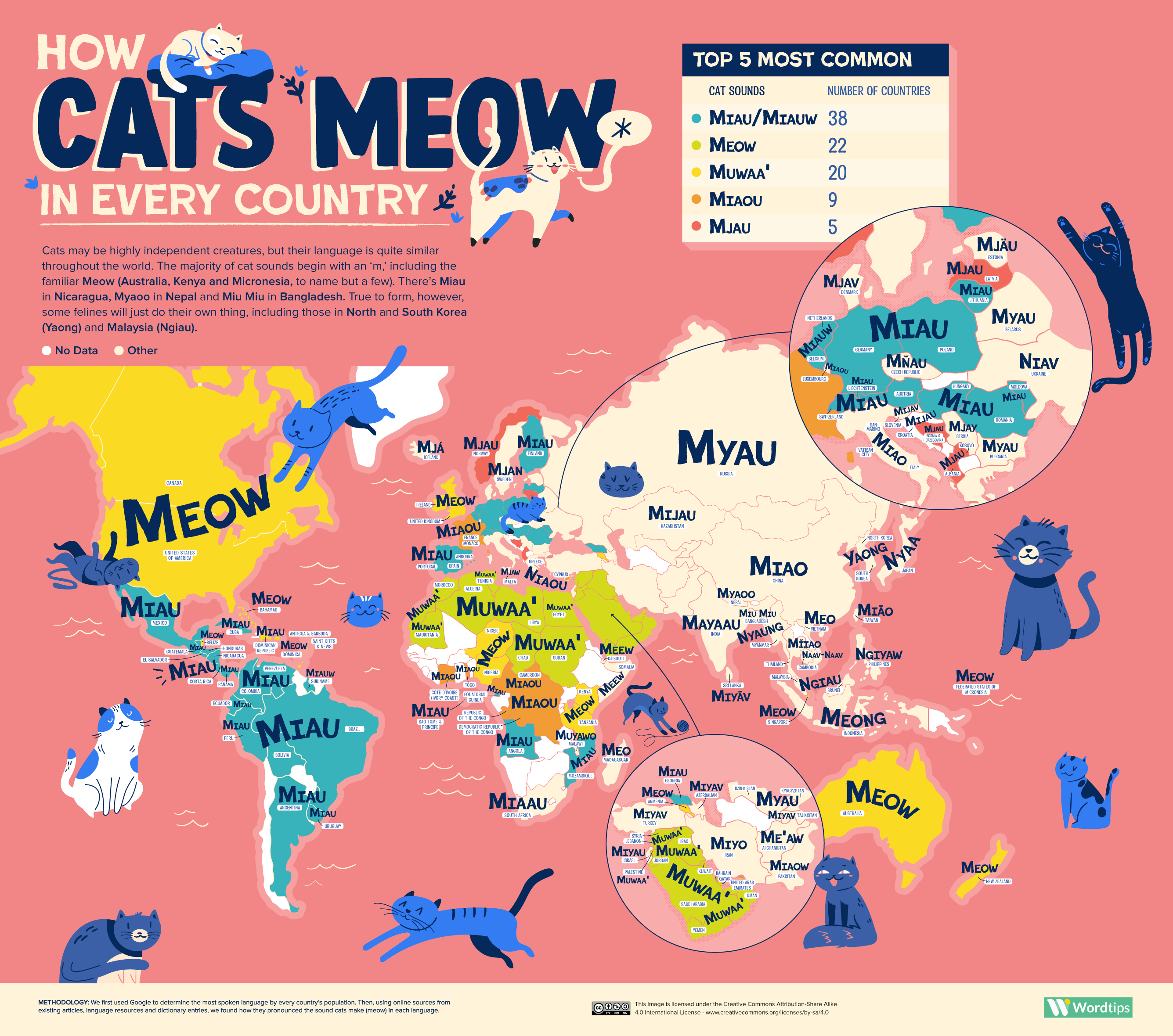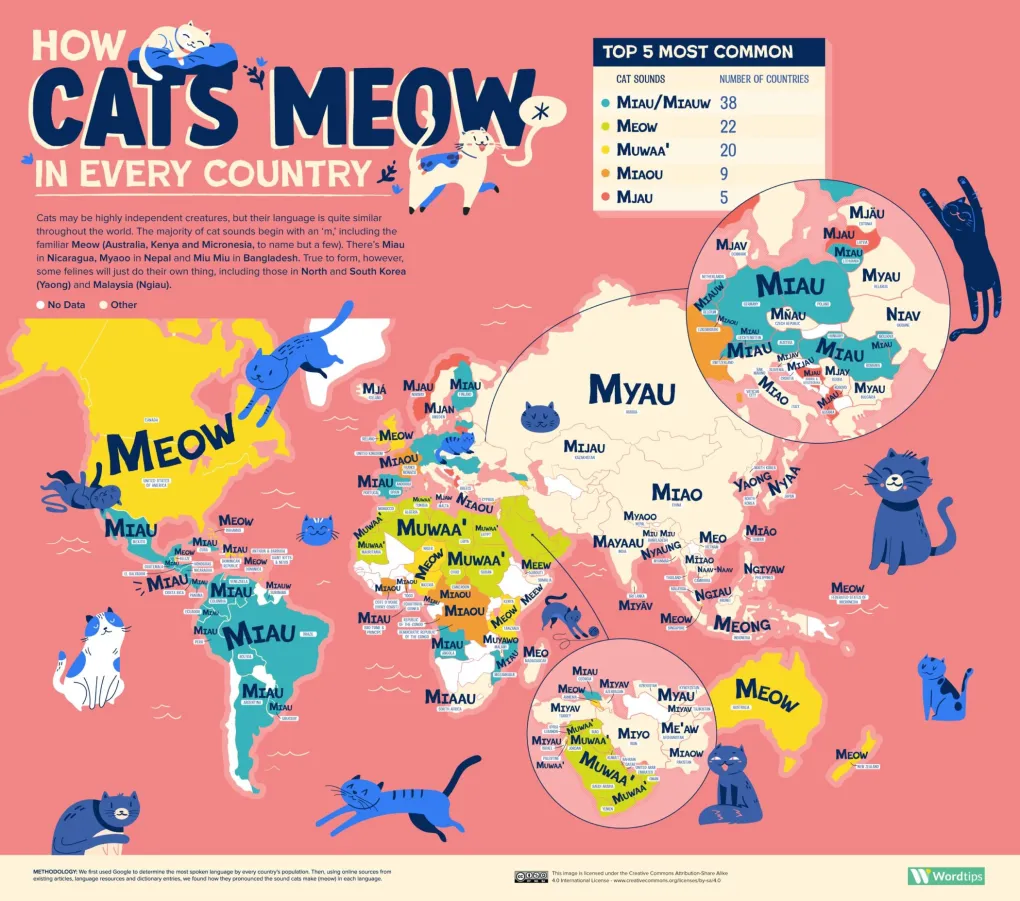We’ve all daydreamed about having a chit-chat with our animal pals, right? I mean, they do get us when we say “sit” or “roll over,” and other basic commands, and sometimes we know what their barks and meows mean. Some clever critters, like Koko the gorilla, even understand sign language. But, let’s be real, a full-blown animal conversation remains a stretch of imagination and wishful thinking.
Instead of a real conversation with our animal buddies, we’re like interpreters, doing our best to understand their furry language. What’s interesting is that even though animals from the same species tend to make the same noises worldwide, how we turn those sounds into human words can be a total language party, depending on where you are in the world. It’s like animals speak the same dialect, but we humans give it our own unique twist.
When it comes to the animals we hold dear and wish to better comprehend, it is often our cherished pets, dogs and cats, which most people consider as part of their own families. With this sentiment in mind, the animal enthusiasts at WordTips took it upon themselves to explore how the sounds produced by these two world-renowned pets may vary across the globe. The results are in and they look really fascinating on the colorful maps below.
Dogs Hau, Hau in More Countries Than They Woof.
(Click to see full size image)

The universal sound of a dog’s bark, often expressed as “woof, woof,” is the conventional interpretation in 13 English-speaking countries, including the U.S., Canada, and various Caribbean countries. Nevertheless, in 19 Spanish-speaking countries, the onomatopoeic representation of a dog’s bark is transcribed as “guau, guau,” and in 22 predominantly Arabic-speaking countries, it takes the form of “hau, hau” or “how, how.”
The diversity in these interpretations arises primarily from the fact that they are largely onomatopoeic, meaning they are spelled to mimic the actual sound. Additionally, the way they are transcribed is influenced by the rules of each language. For instance, as linguist Anthea Fraser Gupta explains, this is why a dog’s vocalization is represented as “woof” in English-speaking regions but as “wāng” in China. This difference is due to the linguistic constraint that words in Mandarin Chinese cannot end with the letter ‘f’.
A Cat’s Meow Is Similar Around the World
In contrast to the variations in how dogs’ barks are interpreted, cat sounds are relatively consistent worldwide. The research revealed that cats tend to “meow” in 22 countries, encompassing English-speaking nations such as the U.S., the UK, and Australia, as well as some non-English-speaking countries like Tanzania and Armenia. In other parts of the world, cats are more likely to produce a similar onomatopoeic sound that often begins with an ‘m,’ such as “miau,” “miaou,” or “muwaa.”
(Click to see full-size image)

Even though we don’t speak the same language as our beloved pets, communicating with them remains a valuable endeavor. In the case of dogs, it’s particularly beneficial to employ “dog-speak,” that endearing high-pitched, baby-talk voice we often use when conversing with an adorable canine. This is because research has shown that dogs form stronger bonds with individuals who use this particular tone, especially when discussing enjoyable activities like going for a walk.
For those who have a stronger affinity for feline companions, it’s a familiar experience that cats can sometimes seem aloof when it comes to responding to their human caretakers. However, it turns out that this aloofness might just be a facade. A study conducted by the University of Tokyo discovered that cats do pay attention to their owner’s voice and actually feel more secure when spoken to in a softer tone. According to feline behaviorist Marilyn Krieger, cats can even learn their names and are capable of being trained to come when called.
And finally, don’t ever feel silly about talking to your pets, as it could be an indicator of your high intelligence. According to behavioral science professor Dr. Nicholas Epley, anthropomorphizing pets, which involves attributing human qualities to them, such as conversing with them as if they were human, reflects our capacity to acknowledge the consciousness of others.


